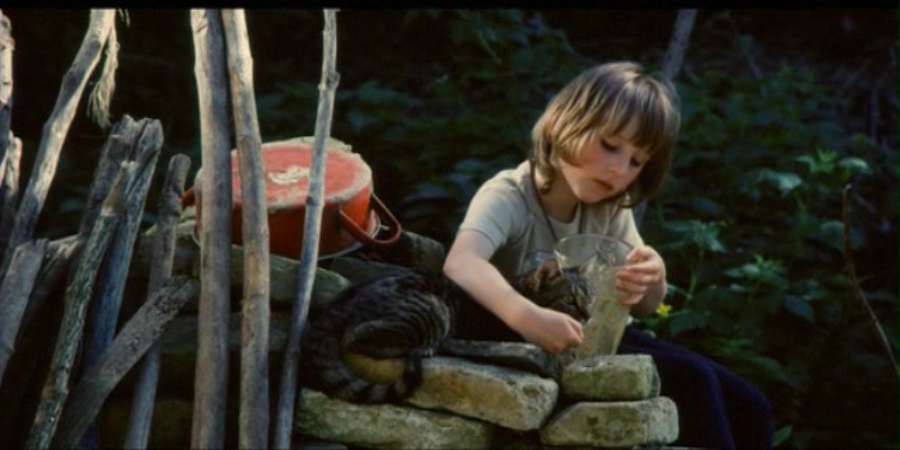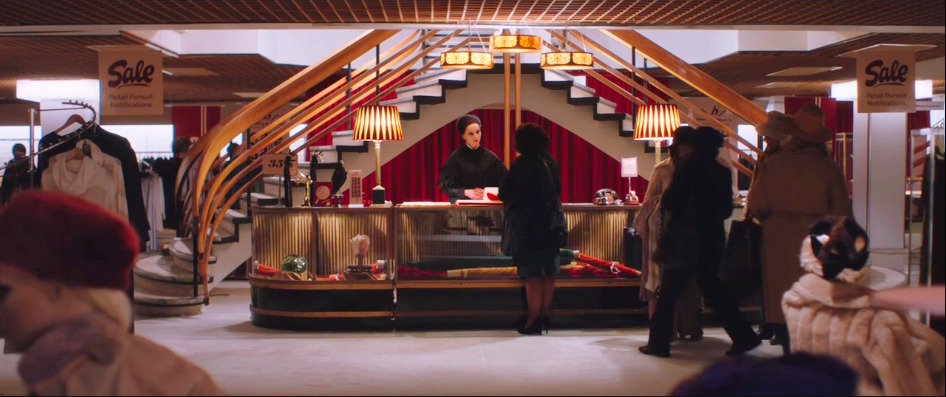a.k.a. Onanie Sister
Tagiru Nikutsubo
Director: Hideo Sakaki
Screenplay: Kôichi Miwa
Cast: Ui Mita as Akane Kanzaki; Shô
Nishino as Kayoko Fukuya; Yasuyo Shiba as Rina Sendô; Shigeru Harihara as Kanzaburô
Yamanami; Yûta Kogiri as Shinji Okada; Tadashi Mizuno as Kensuke Saitô; Matarô
Umeya as Shigeyuki Kimura; Ayumi Tomiyama as Junko Machioka; Kôichi Miwa as Tejima
Obscurities, Oddities and One-Offs
 I wish I could appreciate Naked Desire, but in lieu to Japanese
pinku cinema's history, there's still a lot of films which are just for titillation,
something that Jasper Sharp, author
of Behind the Pink Curtain can
attest to; he wrote in that incredible text of how this medium of softcore sex
films, on low budgets, allowed for such openness in creativity directors like Kōji Wakamatsu instead made controversial
and political films, but he also attested to the many that have been forgotten
on the wayside.
I wish I could appreciate Naked Desire, but in lieu to Japanese
pinku cinema's history, there's still a lot of films which are just for titillation,
something that Jasper Sharp, author
of Behind the Pink Curtain can
attest to; he wrote in that incredible text of how this medium of softcore sex
films, on low budgets, allowed for such openness in creativity directors like Kōji Wakamatsu instead made controversial
and political films, but he also attested to the many that have been forgotten
on the wayside.
This is pertinent as, early in
their DVD releases, Redemption Films
were releasing some fascinating titles, many of which belong to the "The
Four Heavenly Kings of Pink", four pinku directors (Kazuhiro Sano, Hisayasu Sato, Toshiki Sato and Takahisa Zeze) who started in the late eighties and imploded the
genre with innovative work, and other figures who followed after them who took
the material into more introspective creativity. Films like Tokyo X Erotica (1999) are very
idiosyncratic, but it seems that sadly, barring a few fascinating choices I
want to visit, Redemption Film's
choices have sadly slid into sex films which don't live up to their potential,
an utter shame as the British company for a long time (before they focused as
much on the US market) did a lot of admirable things, such as their Jean Rollin releases to even debuting Valarie and Her Weekend of Wonders (1970) on
DVD in the UK, all in spite of their utterly cheesy Satanic lesbian vampire
aesthetic.
Whilst the prospect of ultra-love
budget sex dramas sets in one main house at the coast could've led to so much
interesting creativity, Naked Desire
just decided to go for sex sells in odd ways. It's particularly an annoying
case as the material is there; pinku's reputation is that even if you aren't
dealing with highly cerebral work, there could be a wit or even fun to the
material, as seen when The Glamorous
Life of Sachiko Hanai (2003)
became an unexpected cult hit in the West for its many aspects including George Dubya Bush's finger being an
unexpected plot point.
The set-up here in Naked Desire is interesting as a
premise for a film. A Catholic nun, reminding one of Christianity being a small
but historically distinct aspect of Japan, is tending to an old man who is
debilitated, a fascinating detail waiting to be used that during the sixties he
was a political protester back even at the 1960 Treaty of Mutual Cooperation
and Security between the United States and Japan that caused incredible outcry.
Her life is effected by three abrupt guests - one a self-proclaimed
nymphomaniac and a free spirit, the other two a female teacher with her young
boy lover on the lam from the police, who are hunting them down presuming he's
been kidnapped by her. The later pair are a controversial and potential icky
choice but considering how pinku has the ability to tackle serious material
there's a lot to unpack that could've worked - the chaste nun having to deal
with openly sexual figures and how it effects her own sexual desires; the free
spirit taking a very controversial stance of the treatment of the nun's
patient; and the teacher and student, clearly in love, trying to find their
safe spot away from the lives they've left whilst the younger boyfriend is
discovering his various fetishes, particularly with his buttocks being fondled.
The set up presents a lot to go
with - even with the problematic items at hand, with the addition that the free
spirit believes the best way to help the old ailing man is through sex, even
when he is not entirely aware of his surroundings, if Naked Desire had been openly transgressive with a purpose it
would've at least been interest even if still uncomfortable. Even if it had
been a comedy, it could've done a John Waters
and deliberately been bad taste. The issue is that, for its moments, Naked Desire feels like a lazy
production. The work is incredibly simplistic and flat in telling its tale,
following the barest essentials.
I wasn't expecting a vast complex
psychodrama of a nun's temptations, but a bit of nuisance about her faith
crossing with sexuality should've have reached a point rather than the actress,
visibly merely a cosplay outfit at points, masturbating in front of a crucifix
in a darkened bare room, which really isn't inspiring and too limp to even
consider blasphemous. Even the troubling takes on comforting a disabled old man
sexually, or the young student, can be dealt with through far more than the
film attempts, frankly half hearted. Even the involvement of side characters
doesn't help; the student's male friend, a letch who'll betray his romance
behind his back, is unused. As is the two male detectives and female officer
sent after him and the teacher. The male cops are the worst part of the film,
unfunny and boorish with a bad taste creative choice of them groping the female
detective constantly; she in contrast, even here, is at least someone who
could've been taken in an interesting direction just if it meant more scenes of
her beating up male perverts. That and the quirk of a scene of her masturbating
to porn in the office only to wonder whether the actress looks like herself.
Twice already, I've referenced
masturbating and far from shame, it's more that there's a clinical lack of
pleasure even in a childish way. Probably the biggest failure is that Naked Desire isn't even sexy in a crass
way, just purely mechanical. It's a factor to take away from Sharp's book that, for every work his
praised to the hilt, he devoted an entire chapter to even how pinku cinema when
it slumps crashes badly in the worst. To try to review a sex scene is frankly arbitrary
as, in truth, it neither elates nor provokes, merely causes a shrug of the
shoulders, something no actor or actress willing to bare themselves even for
simulated sex should end up with.
Naked Desire isn't terrible but you'd feel embarrassed to recommend
it, which is a shame as, even for work less put together as this film, I have a
growing fondness for how formats like video and digital camera recording
technology, as well as allowing more people to create films, has produced its
own world of infinite possibilities. Rather than use digital camera for big
budget films over celluloid, digital should be the place for tiny films which
with limited sets, even if I must confuse that the transfer for Naked Desire, for its UK DVD, has one of
the worst looking appearances even viewed on an old TV on an old Blu-Ray player
up scaling it.
It doesn't deny that, barring
some different locations, a film moistly set at a large coastal home, by the
beach, which becomes the heated environment of a predominantly female driven
cast of characters, with sex and passion bottled up, allows for many
tantalising dramatic possibilities, forced to have to improvise a film here
over seventy minutes or so with only what one has. Sadly we don't get this,
even with the options laid on the table of what to do with three female characters,
two proudly sexual and the other conflicted by her duties and desires, with the
two males (one wheelchair bond, the other young and naive) offering a minimal
budgeted pot-boiler you could work with. Even if meant to be a comedy, intermingling
this with erotica, drama and religious existentialism even in a cheesy way
would've have been worth it, an enticement with "limited" and
"no-budget" filmmaking that, even if the acting and technical quality
were to question, you still have resourcefulness and unpredictability. You get
predictability here unfortunately, only changing into something memorable in
the finale.
It's impossible to forget. The
old man suddenly, awoken by the police outside his home triggering his memories
of being a protestor, suddenly turns into Yukio
Mishima during his fatale attempt at a coup d'état in 1970, shouting like a
mad man whilst possessing a lot of "power" between his thighs. Two
male characters decide to have sex, in probably the most progressive moment of
the whole film as, rather than for comedy, it's seen as two guys regardless of
sexuality finding themselves enjoying jumping each other on the kitchen floor.
And the female cast, naked, posing on the outside of a car which, even if
moving slowly, is still impressive in allowing themselves to be in such a
position on a moving vehicle (and probably freezing as it doesn't look like the
scene was filmed on a hot day). At least I could leave this bad film with something
memorable; the rest however doesn't compensate for anything you've had to sit
through, or the moments of crass attitude to the female characters, or the lack
of reward.







-screenshot.jpg)















